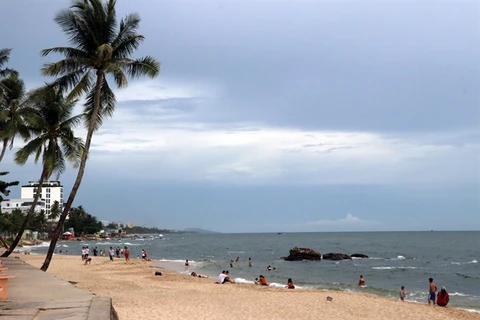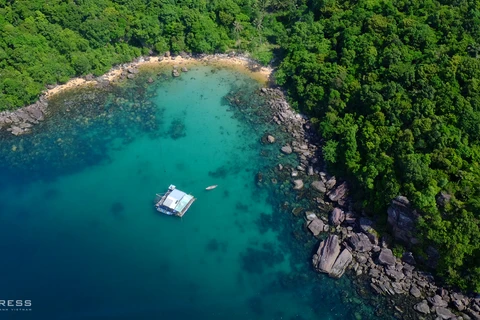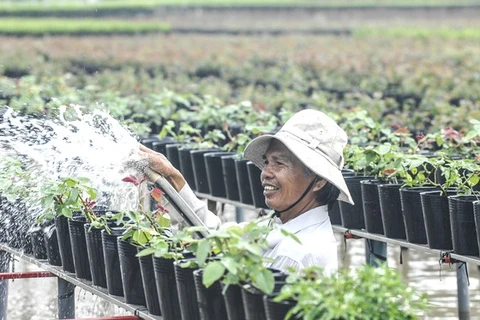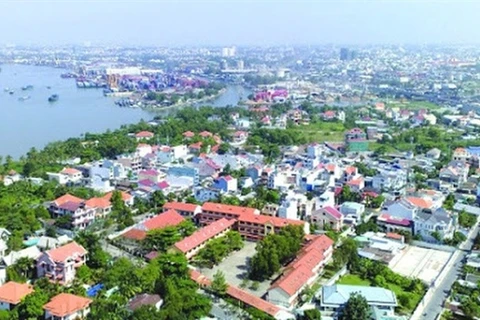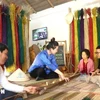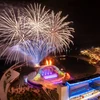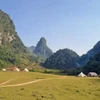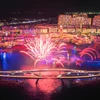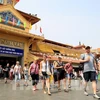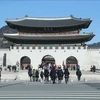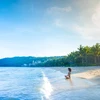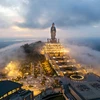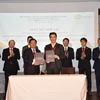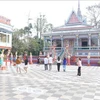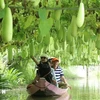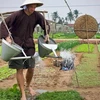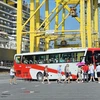Hanoi (VNA) – Representatives from 13 localities in the Mekong Delta, a region that has been defined as the safest area even when the COVID-19 pandemic was yet to be controlled, have shaken hands with each other for the first time to approach tourists in the north during the annual Vietnam International Travel Mart (VITM) organized by the Vietnam Tourism Association (VITA) in Hanoi recently.
According to Pham The Trieu, Vice Chairman of the Mekong Delta Tourism Association, the region has been slightly affected by COVID-19 pandemic with almost no case reported in the community, making tourism always ready to welcome visitors.
As part of efforts to welcome visitors back and recover the tourism sector, all provinces and cities in the region attended the VITM 2020 and seek connections to attract tourists before the year-end holidays.
Over the years, the region has worked hard to develop tourism. Along with the traditional way of tapping rivers and gardens, the regional localities will offer diverse tourism products typical for each locality such as Tien Giang, Ben Tre, Can Tho, An Giang, Bac Lieu and Ca Mau, he said.
At the same time, spiritual tourism and marine-based tourism as seen in Phu Quoc island have seen strong growth in recent years, he added.
Trieu noted that the Mekong Delta tourism develops strongly thanks to close coordination of 13 regional localities in an association, thus supporting each other in optimizing their strengths.
As visitors tend to visit not only one but several localities in their 3-5 day trips, the region has offered different products to attract more tourists.
Along with connectivity in price, destinations and accommodation, the localities have agreed on planned actions to give best services to visitors in the year-end holidays, he said.
The Mekong Delta Tourism Association plans to design a number of waterway tours in Tien and Hau Rivers, Trieu revealed.
Each locality has their own products to offer tourists diverse experience. In Can Tho, holidaymakers can enjoy water-based tours in small islets, while coming to An Giang, they can explore fish farms in Chau Doc.
Trieu admitted that the potential of the region has yet been optimized, stressing that in the future, the association will work to promote the local advantages and strengths.
Specifically, a port will be built in the basa fish monument in Chau Doc, while fish farms will be connected and developed to welcome visitors, he said.
Besides, a boat tour will be designed along the historical Vinh Te canal running through An Giang and Kien Giang province along the border with Cambodia to Kien Giang.
An Giang is calculating to promote eco-tourism to tap its garden and farm strength. The model will be developed in Can Tho city and a number of other localities with unique features, giving more choices to visitors, stated Trieu.
The Cuu Long (Mekong) Delta is a unique network of waterways that have extreme importance in terms of both a local and global context. The 28,000 km river system, along with vast paddy fields and luxuriant orchards create a unique natural setting possessing both beauty and production.
The river system provides a diversity of products that have developed into a fine indigenous cuisine. Floating markets are the most typical characteristic reflecting the traditional culture of the delta. A long time ago, the plentiful water resources attracted the Kinh, Chinese Vietnamese, Khmer and Cham people who came to live and turned the delta into a fertile and prosperous region.
The region has diverse ecosystems, such as orchards in Cu Lao Thoi Son in Tien Giang province, coconut gardens in Ben Tre province, An Binh village in Ving Long province, Phong Dien district in Can Tho province, the ecosystem in flooded indigo forests in the Lang Sen Nature Reserve in Long An province, the Dong Thap Muoi area in Dong Thap province, Tra Su indigo forest in An Giang province, coastal mangrove forests (bird sanctuaries, nature reserves, national parks, biosphere reserves) in Can Tho, Dong Thap, Bac Lieu and Kien Giang provinces.
In addition, the Mekong has incredible marine and island ecosystems. The 700 km long coastline of the delta is divided into two parts. The eastern coastline stretches from Tien Giang province to Ca Mau province. In this part, there are a number of estuaries which create picturesque beaches such as Tan Thanh (Tien Giang province), Thanh Phong (Ben Tre province), Ba Dong (Tra Vinh province), Hiep Thanh (Bac Lieu province) and Khai Long (Ca Mau province).
A big lighthouse is on the Hon Khoai island in Ca Mau province, the only place where one can admire the sunrise in the east and sunset in the west. The western coastline connects Ca Mau province to Kien Giang province. This part has rich potential to develop tourism. This is a peaceful region with plentiful sea resources, beautiful beaches and vast caves. With hundreds of multiform islands, the region is named "the Halong Bay of the south". Phu Quoc island is trying to become an international destination for marine eco-tourism./.




